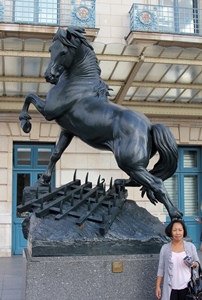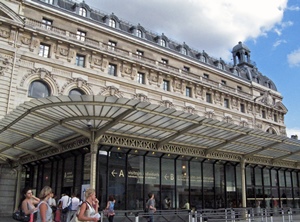
Musée d’Orsay Med Lrg |
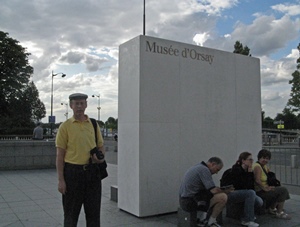
Bob and Museum Sign Med Lrg |
The Musée d’Orsay is home to artworks completed between 1848 and 1915, and houses the largest collection of French impressionist and post-impressionist masterpieces in the world. There are substantial representations of artists like Monet, Manet, Degas, Renoir, Gauguin, Toulouse-Lautrec and van Gogh. The American painting known as Whistler’s Mother is here too. Other genres and artistic media of the period are also on display. We’d show you some of this, but one other thing the museum has is a strict no-photography rule. If you'd like to see some of the art, you might check out the museum's web site and go to the "Collections" link, though many of the works are well-known enough to appear in many other places around the Internet. Just not here. We were, however, able to sneak a few general interior photos.
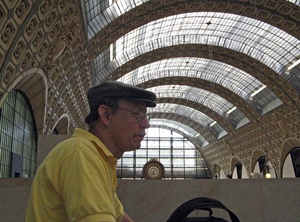
Bob in the Museum Med Lrg |
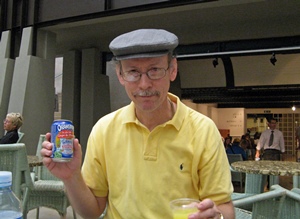
Bob and Orangina at Museum Café Med Lrg |
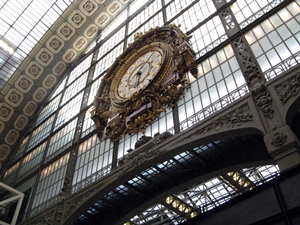
Museum Clock Med Lrg |
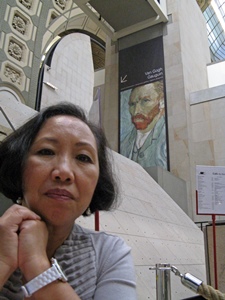
Nella and Van Gogh Poster Med Lrg |
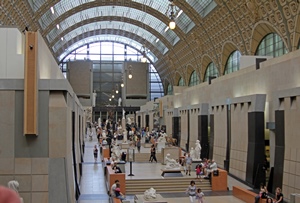
Central Hall Med Lrg Xlg |
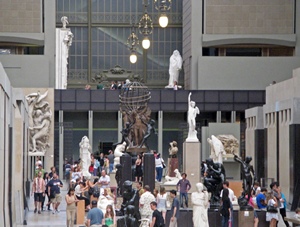
Sculpture in Central Hall Med Lrg |
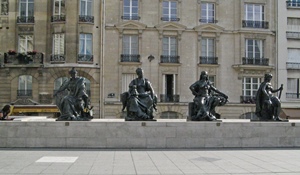
Allegorical Bronzes Med Lrg |
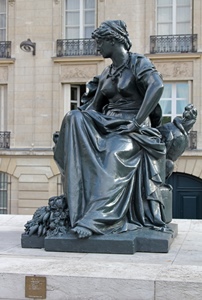
South America, Aimé Millet (1877) Med Lrg Xlg |
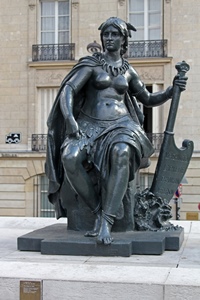
North America, Ernest Eugène Hiolle (1878) Med Lrg Xlg |
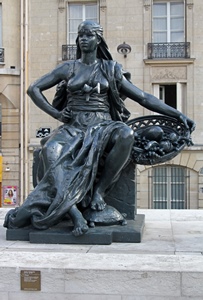
Africa, Eugène Delaplanche (1878) Med Lrg Xlg |
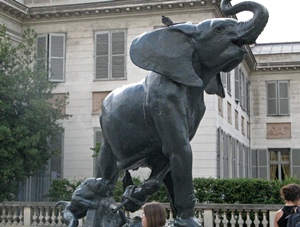
Young Elephant Trapped, Emmanuel Fremiet (1878) Med Lrg |
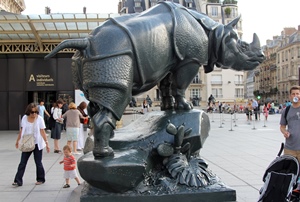
Rhinoceros, Alfred Jacquemart (1878) Med Lrg Xlg |
By the time we’d finished with the Musée d’Orsay it was 7 PM. But the sun stays up late in Paris in July, so we decided to walk across the river and explore the Champs-Elysées with the daylight and energy we had remaining.
